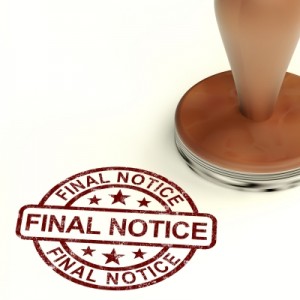Breaking News & Updates
Xero’s financial report reveals BIG loss but share price pop. - eepurl.com/isNmKQ
One of the things we cover in our MYOB Training Courses is how to deal with what is, unfortunately, becoming a rather common accounting issue—bad debt.
If you provide your goods or services on credit, it’s likely that at some point, particularly during times of economic volatility, you will encounter a customer that is unable to pay for the goods or services rendered.
Most of the time, many customers just need more time to pay, however, there will also be those customers that never will pay. And in the case of the latter, the debt will need to be written off.
For a debt to be considered bad and written off you need to show that all the necessary steps have been taken to recover the debt, but there is still no likelihood of the debt ever being recovered for one of the following reasons:
- The debtor has died leaving no assets or insufficient assets
- The debtor cannot be traced and no assets discovered
- The debtor is bankrupt or in liquidation and insufficient funds exist
Once you’ve reached this point, however, is when things start to get complicated. Often how you record the income for your business will determine how you account for a bad debt, particularly if you’re using accruals-basis accounting.
While there may still even be instances where, even though you’ve written off a customer’s debt as bad debt, it may later be paid to you—often in another tax year and affecting that year’s income.
This is what makes the accounting treatment of bad debts complicated. While you’ll learn about how to account for bad debt in our MYOB Training Courses, if you’re unsure you should always consult your accountant to help determine the best course of action for your business or the business you’re representing.
-- Did you like what you read? Want to receive these posts via email when they are published? Subscribe below.










